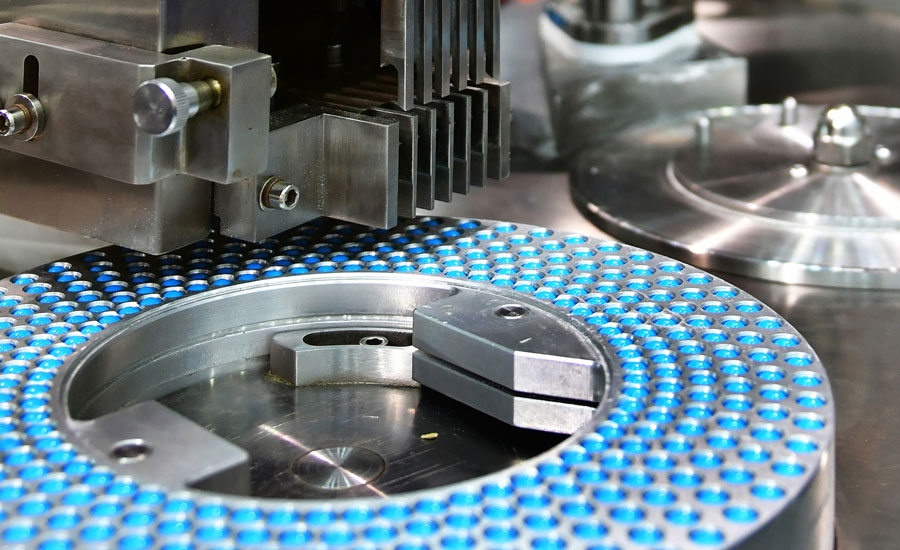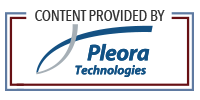Pleora’s AI Gateway simplifies the deployment of advanced machine learning capabilities to improve the reliability and lower the cost of visual quality inspection. Working with existing hardware and software, the embedded platform integrates plug-in AI skills, a user-friendly approach to algorithm training, and powerful processing to support more advanced machine learning and computer vision algorithms.
Early Trials
Numerous customers are now trialing the AI Gateway for inspection applications in print, pharmaceutical, consumer or industrial goods, and food inspection markets. One example customer (we will call this company Wide Brands) manufactures a wide range of products under its own brand as well as white labeled for other companies.
Pleora has been working extensively with the senior IT/professional services engineer at Wide Brands to understand her challenges and requirements. “Sheila” is responsible for an inspection line, and works closely with quality control and production managers, line leads, and line operators, while providing IT and engineering services to various company departments.
The Issue
In a pharmaceutical inspection application some good pills are being mistakenly labelled as defective product. Of more concern, it’s possible some defective products are being packaged for shipment. As a result, the company is manually re-examining pills. Labor costs are mounting and shipments are being delayed.
Sheila is now working to find solutions. She has evaluated AI-based machine learning technology to train the inspection system to better identify defects, but has a few valid concerns:
- Cost related to development, coding, and training time related to algorithm development;
- Vendor lock-in – Sheila does not want to be forced to rely on one company for equipment, software updates, or after-sales support;
- The company has made significant investments in inspection equipment, and a “rip and replace” strategy won’t fly with management;
- Despite the current issues, there are processes in place which are well-understood by line managers and operators and Wide Brand can’t afford the time or risk to retrain all individuals. As well, the system must be easy to use for individuals.
Developing a Solution
Engineers and UXD experts from Pleora spent time with Wide Brands to better understand the daily challenges for Sheila and her staff that had to be accounted for during product design. Their main takeaways included:
- If a proposed solution is too complex, she’ll look for an alternative;
- She does not want to incur external costs. Any proposed products need to be intuitive and easy to use. She wants to rely on her own expertise, and the knowledge of internal staff, and recognizes there are possible open source solutions to the problem;
- Her reputation is at risk. Inspection errors and resulting production stoppages are costing the company thousands of dollars per minute and exposing it to risk.
The resulting product is an off-the-shelf AI Gateway hardware solution that accepts the feed from existing cameras on the inspection line, with pre-packaged machine learning inspection skills that can be trained to detect common errors.
“No code” AI plug-ins are a big selling point for Sheila; she can begin to deploy more advanced inspection capabilities without algorithm development. AI algorithm training has traditionally required multiple time-consuming steps and dedicated coding to input images, label defects, as well as fine-tune detection and optimize models. A “no code” approach to training allows users to upload images and data captured during traditional inspection to software that automatically generates plug-in AI skills with minimal human input.
Plug-in AI skills can be generated for machine learning-based classification, sorting, detecting, and hyperspectral capabilities with a straightforward training approach. AI for inspection excels at locating, identifying, and classifying objects and segmenting scenes and defects, with less sensitivity to image variability or distortion.
AI algorithms are also more easily adapted to identify different types of defects or meet unique pass/fail tolerances based on requirements for different customers without rewriting code. For Wide Brand, this means less setup time for white label product lines with different fault tolerances or unique requirements. In addition to plug-in AI solutions, Sheila’s team could leverage the processing power of the AI Gateway to load open source or internally developed algorithms for custom or unique requirements.
For Sheila’s application challenges, hyperspectral imaging is being evaluated to detect subtle changes in the composition of active ingredients in visually identical pills to screen out-of-specification products. Similar customers in the food inspection market are evaluating the AI Gateway with the no-code hyperspectral and inspection plug-ins to detect foreign materials and ensure products meet quality standards while reducing costly visual examination.
The AI Gateway works alongside existing cameras and processing software, so there are no significant costs or changes to processes for line operators. In the inspection application, a gateway device intercepts the camera image feed and applies the selected plug-in AI skills. Users can also develop AI skills for custom requirements that are uploaded to the gateway. The gateway sends the AI processed data over a GigE Vision connection to the inspection and analysis application, which seamlessly receives the video as if it were still connected directly to the camera.

